|
|
|
Local information > Local Attraction
Once upon a time...
Heirs to the Vikings, the Norman dukes reached out as far as the Kingdom of Sicily firmly establishing themselves as powerful rulers. From the year 1050 onwards, it was one of their most famous representatives, William the Conqueror, who was to change Caen's destiny forever.
William was born in Falaise in 1027. The illegitimate son of Robert the Magnificent, Duke of Normandy, and Arlette, daughter of a tanner, he was nicknamed "the Bastard". After the death of his father when William was 8, he became Duke of Normandy but the Norman barons revolted against him, joining forces against this young master of the duchy. At the age of 20, William definitively established his power in the province, after his victory over the rebels in Val-ès-Dunes (near Caen). He then decided to make Caen a strategic site and main place of residence.
Around 1050, William married Matilda of Flanders, his distant cousin, going against the wishes of the Pope. To obtain the Church’s pardon, at the same time as building the mighty Caen Castle (see below “Ducal castle”) he built two abbeys. One is dedicated to Women, the Ladies' abbey (see below “Ladies' abbey”) consecrated to the Holy Trinity ; the other, the Men's Abbey (see below “Men's abbey”) is dedicated to Saint-Etienne. Around the same time, he began the construction of the ducal castle.
Across the Channel, as the King of England neared the end of his life, he appointed William, his cousin, as his successor. However, the Saxon Harold, betraying the promise made to William, was crowned. In the face of this felony, William armed an invasion fleet and defeated Harold at the bloody Battle of Hastings (depicted in the Bayeux Tapestry) in 1066. "The Bastard” became “The Conqueror” and was crowned Kind of England in Westminster.
Four years after Matilda, William died in Rouen in 1087. They were both buried in Caen in the abbeys they founded: William at the Men’s Abbey and Matilda at the Ladies’ Abbey. Their descendants reigned over the Anglo-Norman kingdom until 1204, when Normandy was annexed by the King of France.
From the Renaissance to the Enlightenment, Caen expanded in times of Peace, building its urban image ; private Italian-style mansions, Saint-Sauveur square and the convent buildings of the two abbeys. In the wake of the poet, François de Malherbe, the city boasted an intense intellectual railroad and canal linking Caen to the sea in 1857.
On summer 1944, Caen set its mark on the world stage with the Normandy Landings (see below “Normandy Landings”). Originally, the Allies aimed to take the French city of Caen, one of the largest cities in Normandy, on D-Day (June 6th 1944). Finally, the battle for Caen (see below “battle for Caen”) took place from june until august. From its ashes, the city grew to prove the values of peace, solidarity and human rights, so well reflected today in Caen Memorial Museum.
Ducal castle

Built around 1060 by William the Conqueror, the ducal castle became a favourite residence of the dukes of Normandy and kings of England, who expanded it into one of the largest walled fortifications in Europe. The ramparts, the Porte des Champs, the ruins of the great keep, the Exchequer Hall and the Church of St. George all bear witness to the long history of a site that now houses the Museum of Normandy, the Museum of Fine Arts and related exhibitions.
After major restoration, the castle now offers fresh views over the city from the belvedere on the restored ramparts, and reveals its hidden secrets beneath the restored gun-terrace, reconstituted from the Salle des Remparts.
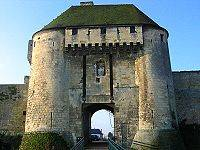
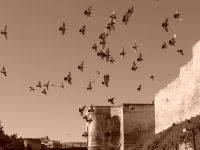
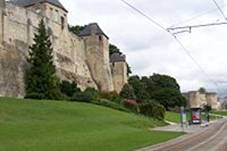
- Free admission all year round
- Guided tours in July and August (only in French)
- Puzzle books for children available all year round at Caen Tourist Office or at the Normandy Museum (in english)
Ladies' Abbey
Founded by Matilda around 1060, the church of the Trinity is a masterpiece of Norman Romanesque architecture. Don't miss the crypt and the tomb of Queen Matilda.
Magnificently restored, the 18th century convent buildings were occupied by Benedictine nuns until the Revolution. Turned first into a hospital and then a home, they have housed the Lower Normandy Regional Council offices since 1986. Do not miss the cloister and the grand staircase.
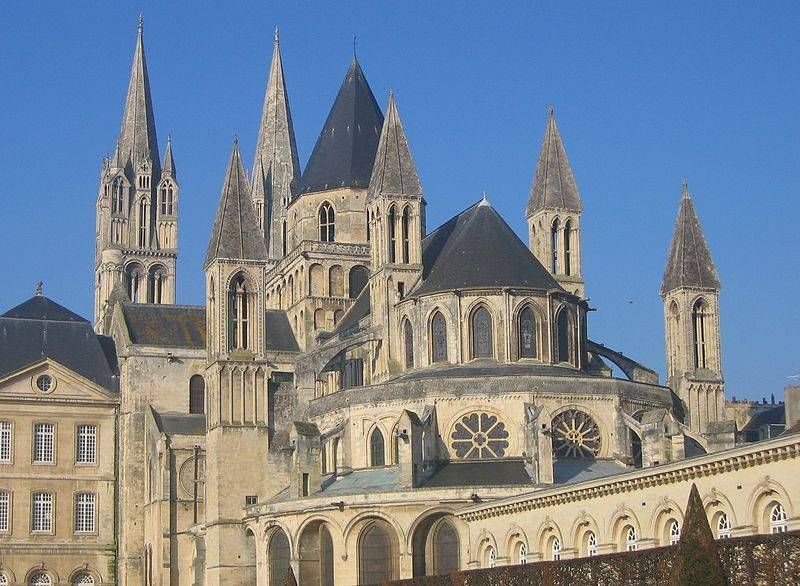
- Guided tours every day at 2.30pm and 4pm (except on Christmas Day, New Year's Day and 1st May)
- Opening hours : Visitors are welcomed every day from 2pm to 5.30pm
- Free admission
- Visit last : 1 hr
Men's Abbey
The monastery buildings are now home to Caen Town Hall. Built in 1066 during the reign of William the Conqueror, they were restored in the 18th Century. The abbey church of Saint-Etienne, a gem of Romanesque and Gothic architecture, contains the tomb of the Duke of Normandy. You may visit the Abbey at your leisure (except during services).

Guided tours
Monastery buildings : daily guided tours (except 12/25, 01/01, 05/01 and weekends of December) at 9.30am, 11am, 2.30pm and 4pm (1hr30). The 11am tour includes the monastery buildings, the press house and the Guard's Room. The others include the monastery buildings and the abbey church.
Daily extra tours (50 mn) in July and August at 10.15am, 3.15pm and 5.15pm.
Rates
- Full rate: €4
- Reduced rate: €3 (students, over-60's and when only half of the rooms can be seen)
- Free for -under-18's, school groups, disabled people and carers, jobseekers and everyone on Sundays.
Normandy landings
The Normandy landings, codenamed Operation Neptune, were the landing operations of the Allied invasion of Normandy, in Operation Overlord, during World War II. The landings commenced on Tuesday, June 6, 1944 (D-Day), beginning at 6:30 AM British Double Summer Time (GMT+2). In planning, D-Day was the term used for the day of actual landing, which was dependent on final approval.
The landings were conducted in two phases: an airborne assault landing of 24,000 (According to new files released by the British, there were 24,500 paratroopers, 500 of them being highly trained commandos) British, American, Canadian and Free French airborne troops shortly after midnight, and an amphibious landing of Allied infantry and armoured divisions on the coast of France starting at 6:30 AM. There were also decoy operations under the codenames Operation Glimmer and Operation Taxable to distract the German forces from the real landing areas.
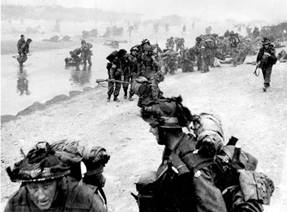
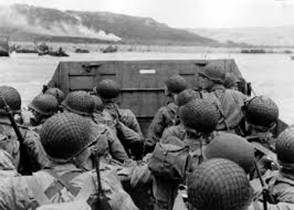
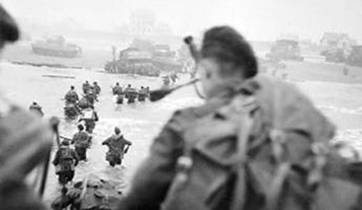
Supreme Commander of the Allied expeditionary forces was General Dwight Eisenhower while overall command of ground forces (21st Army Group) was given to General Bernard Montgomery. The operation, planned by a team under Lieutenant-General Frederick Morgan, was the largest amphibious invasion in world history and was executed by land, sea, and air elements under direct British command with over 160,000 troops landing on June 6, 1944. 195,700 Allied naval and merchant navy personnel in over 5,000 ships were involved. The invasion required the transport of soldiers and material from the United Kingdom by troop-laden aircraft and ships, the assault landings, air support, naval interdiction of the English Channel and naval fire-support. The landings took place along a 50-mile (80 km) stretch of the Normandy coast divided into five sectors: Utah, Omaha, Gold, Juno and Sword.

Battle for Caen
In the Battle of Normandy, Caen was a vital objective for several reasons. Firstly, it lay astride the Orne River and Caen Canal; these two water obstacles could strengthen a German defensive position if not crossed. Secondly, Caen was a road hub; in German hands it would enable the enemy to shift forces rapidly. Thirdly, the area around Caen was relatively open, especially compared to the bocage country in the west of Normandy. This area was valued for airfield construction.
On D-Day, Caen was an objective for the British 3rd Infantry Division and remained the focal point for a series of battles throughout June, July and into August. The battle did not go as planned for the Allies, instead dragging on for two months, because German forces devoted most of their reserves to holding Caen, particularly their badly-needed armor reserves. As a result German forces facing the American invasion thrust further west were spread thin, relying on the rough terrain of the back country to slow down the American advance. With so many German divisions held up defending Caen, the American forces were eventually able to break through to the south and east, threatening to encircle the German forces in Normandy from behind.
The old city of Caen, with many buildings dating back to the Middle Ages, was largely destroyed by Allied bombing and the fighting. The reconstruction of Caen lasted until 1962. Today, little of the pre-war city remains.

View of the rue de Bayeux in Caen. We can see, in background, the two bell-towers of the Men’s Abbay remained intact.

